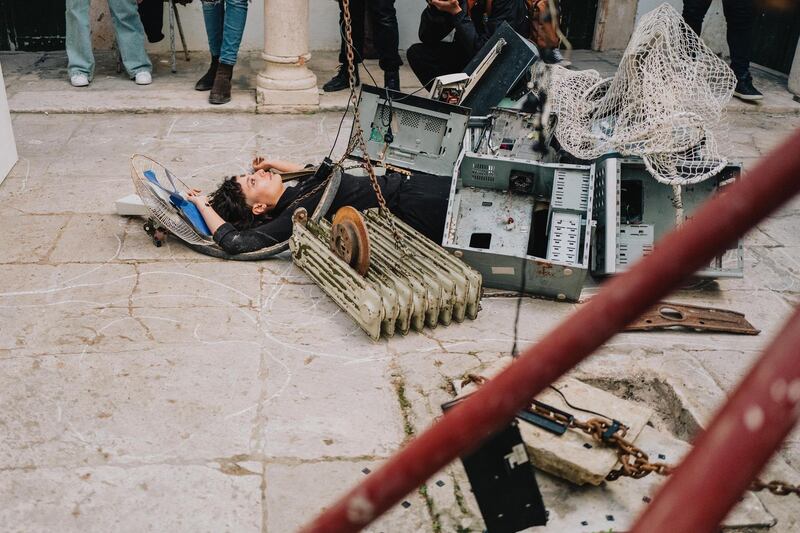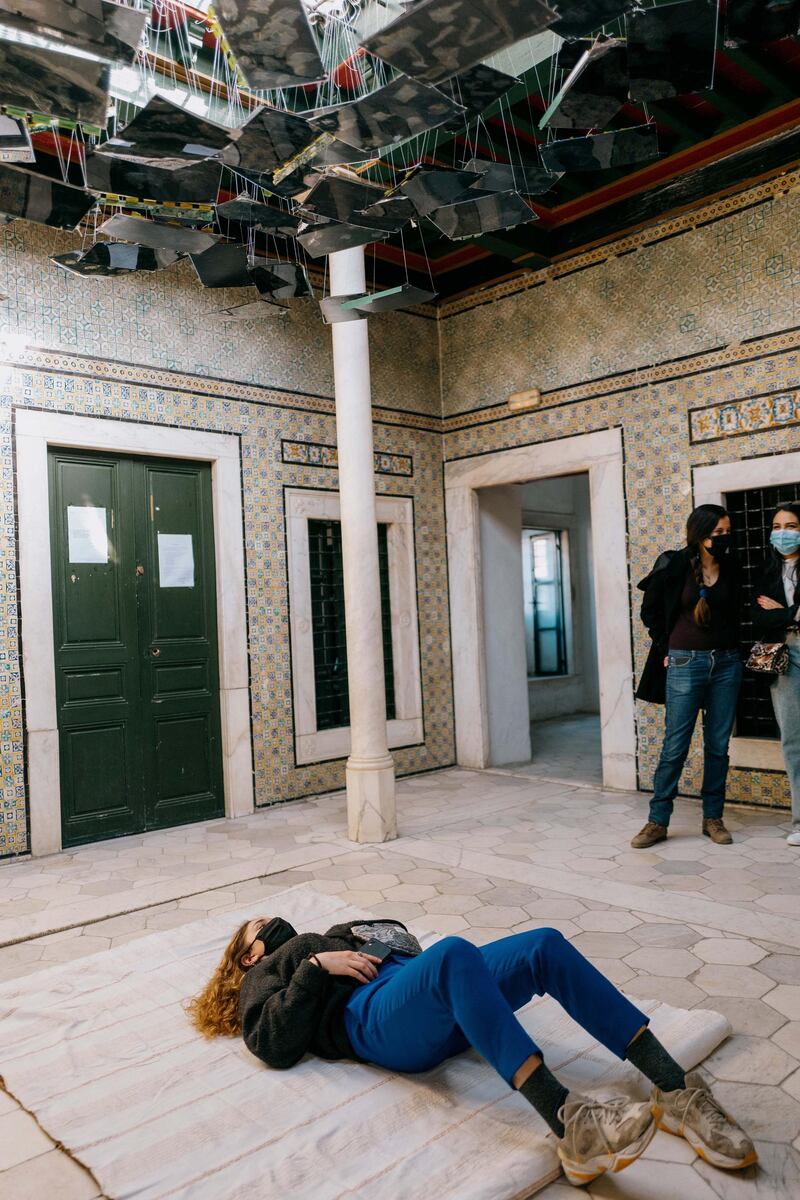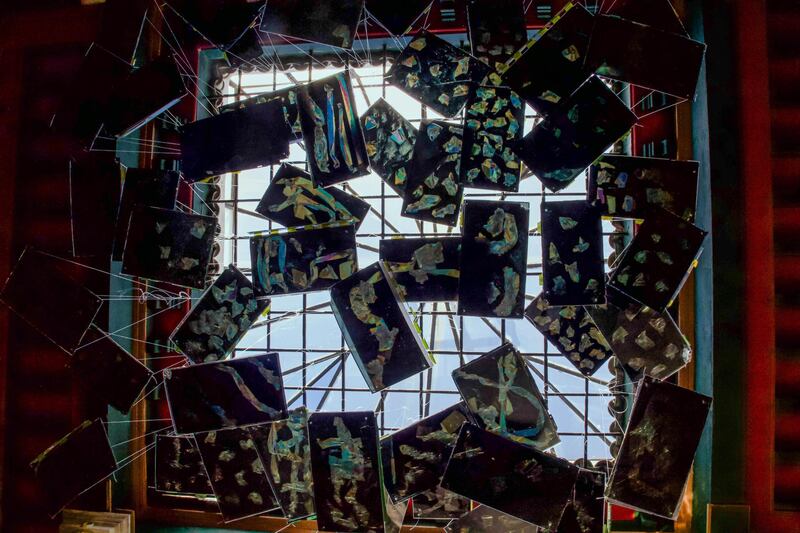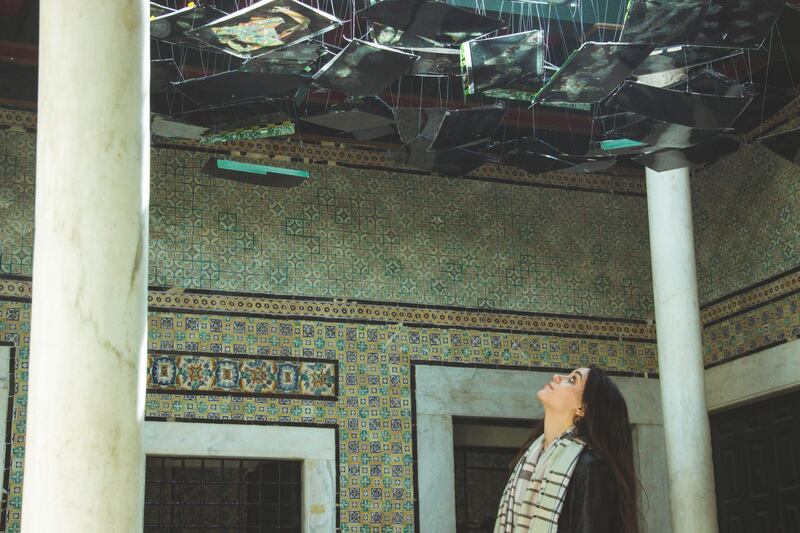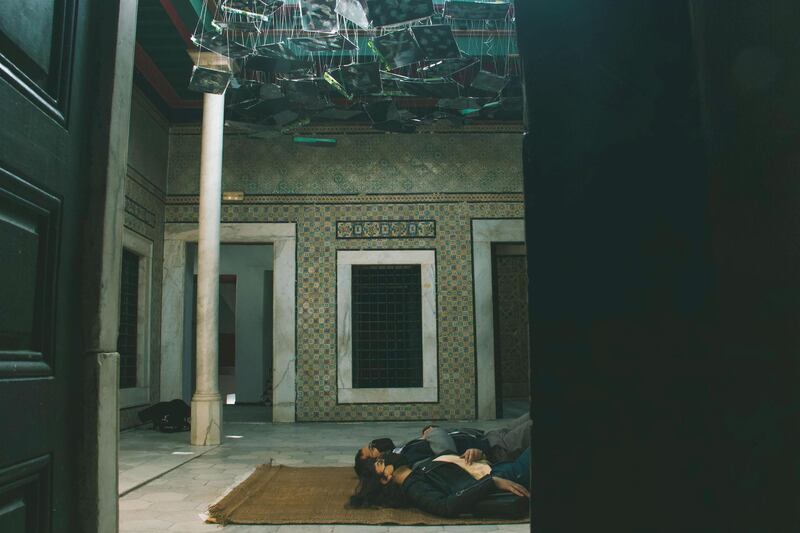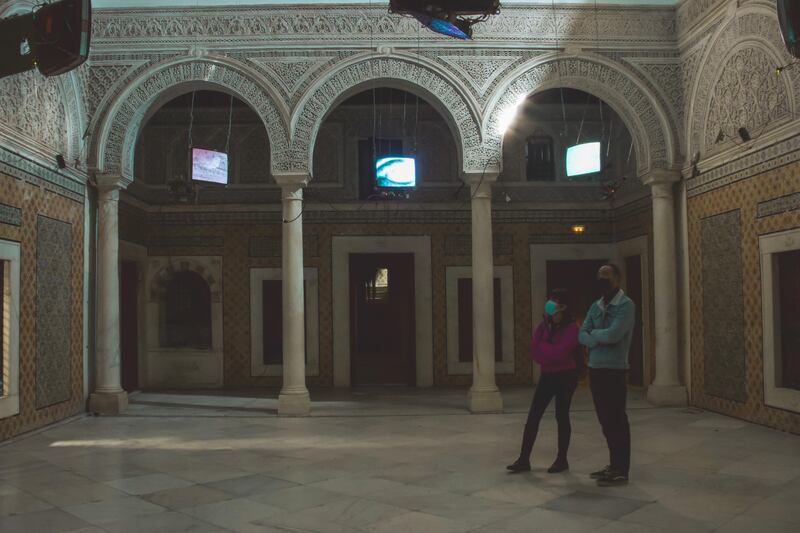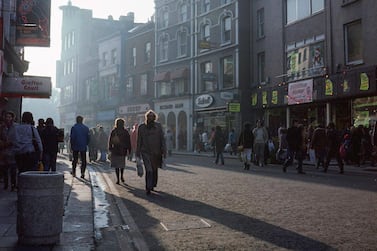Where do our screens go when they die? An exhibition of site-specific installations in Tunis is trying to untangle that complicated question.
In the sprawling capital city of Tunis, some find a second life in junk and repair shops piled high with circuits, plugs and tempered glass in the narrow alleys of the medina. Some are stripped for parts or shipped back to their makers, but most electronics end up in the North African country's network of poorly managed landfills, if they end up there at all.
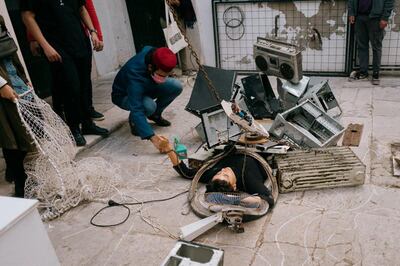
All along the country’s roads and beaches among ad hoc dumps of construction rubble and hundreds of glass bottles, it is not unusual to find an old TV, or an air-conditioning unit, or tangle of cords and wires to devices past their prime.
Then there are the screens, circuits and cracked DVDs, a handful of which have been transformed by four artists into intriguing works for Electrical Disorder, an installation at the historic Dar Lasram, in the medina of Tunis, which focuses on e-waste.
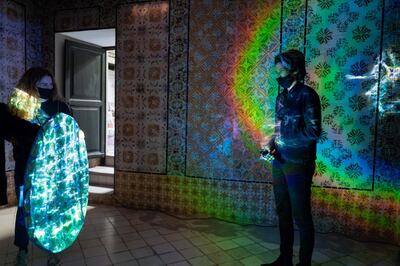
Electrical Disorder, organised by curators Aymen Gharbi and Bettina Peltz, is part of a creative reimagining of the biannual Interference Festival, which in years past has filled historic homes in the medina with light-based installations. When coronavirus restrictions made a broader site-specific programme almost impossible, the team pivoted.
“During the pandemic, digital devices became our ‘sites’,” Gharbi and Peltz explain in their curatorial statement.
Once they had turned their attention to discarded electronics, they couldn’t stop seeing it. They commissioned the four artists — three young Tunisians and German Frederich Boell — to create works that spoke to the urgent nature of the looming e-waste crisis.
The results are a mix of surprising, intriguing and, at times, frustrating works that each incorporate jettisoned technological devices as their base medium, and pose questions about our interaction with the digital and electronic world around us.
In Oussama Menchaoui's piece, Seeing Through Sounds, six discarded TV sets, their innards exposed, are suspended in the middle of the darkened courtyard of Dar Lasram, a lushly tiled Beylik-era mansion in the medina. The screens flicker a sequence of images of varying clarity, and a soundscape of the artist's own making is piped in to complete the piece.
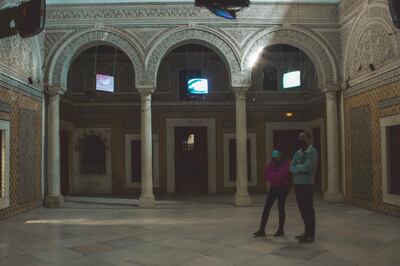
In the dim expanse of the courtyard, it is easy to miss the most arresting facet of Menchaoui’s installation: trios of what look like disemboweled speakers lunging out from between the screens, craning as if they were listening to you. These serve as an unsettling reminder that our digital world is two-way; we may think the electronics we engage with are just broadcasting to us, but they’re often also listening.
The piece suffers, however, from being hung too high, with the viewer too far removed from it to truly connect. Yet the retro TVs are asking for someone to come too close, as they may have for early-morning cartoons, and get fully engulfed in the piece.
The same problem plagues Colours of the Medina, Boell's piece, which is also suspended from the ceiling. It is made from dozens of cracked and weathered laptop screens with tape sandwiched between the layers of tempered glass to create a moire rainbow. The effect is arresting, but needs a brighter backlight and a closer look to make a real impact.
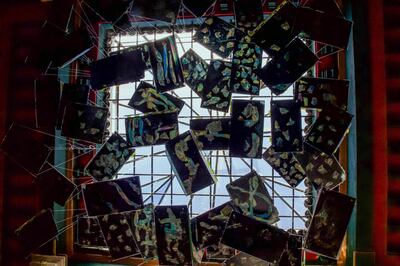
It was originally meant to be made with hundreds of iPhone screens, which are abundant in Germany. But the production team in Tunis could barely find any. Few luxury electronics make it to Tunisia and consumers are left with lower-quality options that break down and are discarded quickly.
Elsewhere, Haifa Ouerfelli's piece, LUCIDUM, creates an eclipse of broken light refracted off of DVDs that scatters across the impossibly ornate tiles of the room where it is exhibited. The panel is meant to be bent and manipulated in a way that invites a playfulness to the piece (and adds a certain Yayoi Kusama-esque Instagram appeal).
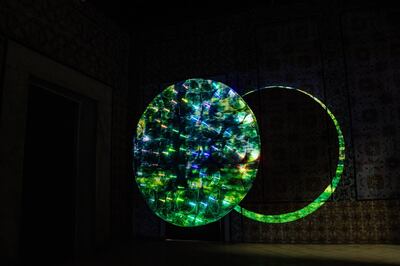
But the light-based works are outshined by the work of Rym Hayouni, whose performance piece, [pro 1:11], delivers her subtly layered message with studied poise and tenacity. Hayouni, who is a trained dancer, traversed neighbourhoods, beaches and roadways, methodically attaching jettisoned electronics to chains around her ankles as she found them.
Her video documents of these performances are lush, shot in black and white in gorgeous late-autumn light that makes the contrast of the idyllic surroundings and the garbage all the more stark. As she drags a broken monitor and a braid of mobile phone cords across a beach, onlookers gather. They are perplexed and uncomfortable. So are we.
The performance culminates daily at Dar Lasram, where Hayouni invites the audience to cover her in the e-waste she dragged to the venue. Recently, she lay under a pile of PCs and a boom box; an audience member approached and placed an SD card right on her forehead. Yet even as the waste piled on, she remained serene – relaxed almost – and not crushed under its weight.
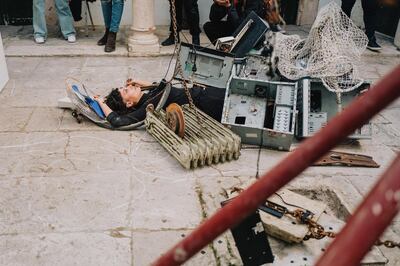
These screens and circuits are a burden we tell ourselves is comfortable, necessary, one we are willing to bear if it means we can enjoy a little more convenience. But don’t ask us what happens when they die.
Electrical Disorder is on view at Dar Lasram in the medina of Tunis until Sunday, March 21. More information is at itunis.net
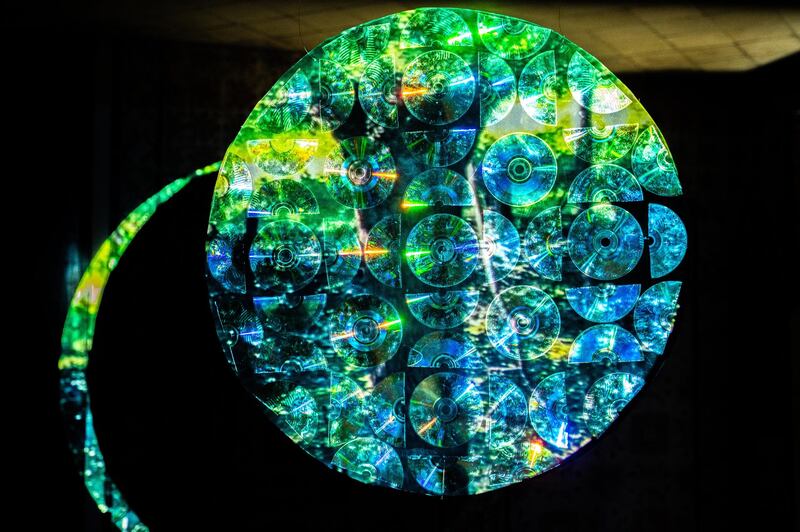
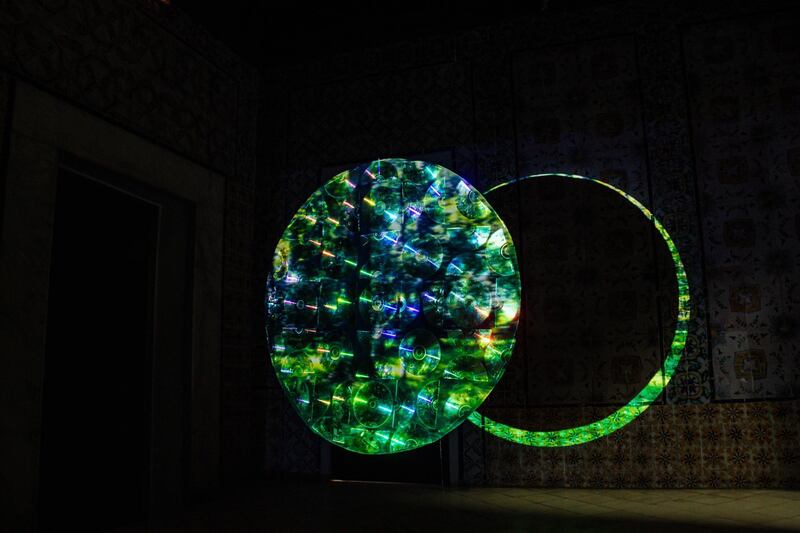
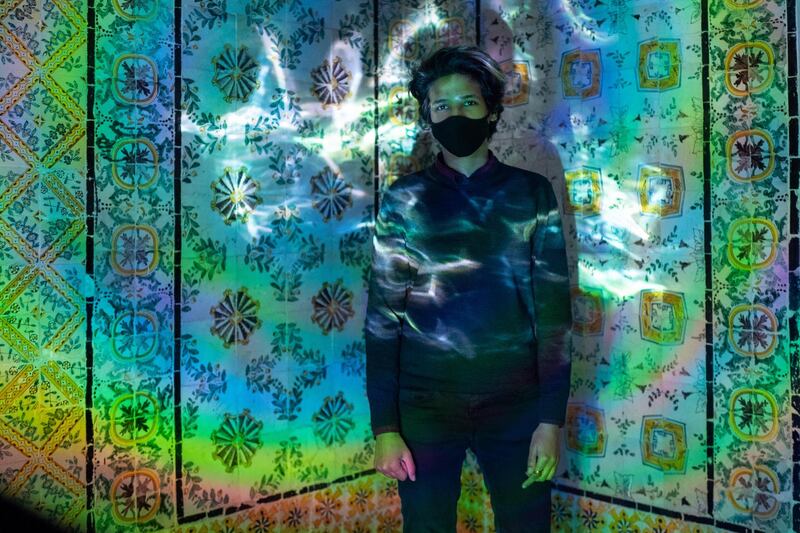
![INTERFERENCE Series: Electrical Disorder. Artist: Rym Hayouni. Artwork: pro [1_11]. Photo by Nizar Messaoud](https://thenational-the-national-prod.cdn.arcpublishing.com/resizer/v2/5XZ3LAAJOY4KCIJKFTCKNV7ETI.jpg?smart=true&auth=48e26dba42de144bbe9439fb00dd7b2606d53fa833abc1d8af4384f915f3acf0&width=800&height=533)
![INTERFERENCE Series: Electrical Disorder. Artist: Rym Hayouni. Artwork: [pro 1_11]. Photo by Mohsen Bchir](https://thenational-the-national-prod.cdn.arcpublishing.com/resizer/v2/P3E3TXCPZA5PPSWYR2RRVACYZY.jpg?smart=true&auth=323ddea0226bb7588bf06527c7b4697354d507fe22526e2643f37df6e7b972be&width=800&height=533)
